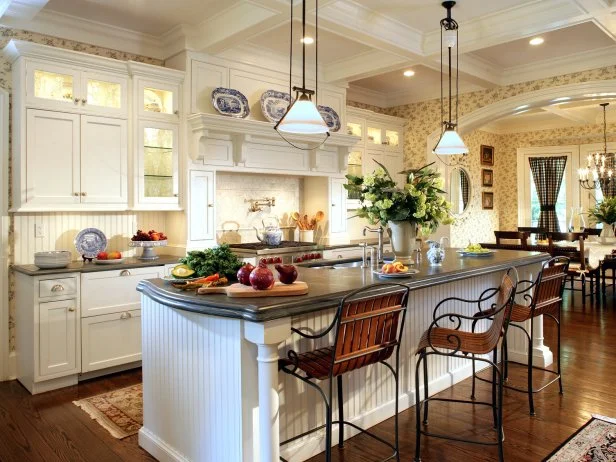Personalize Your Kitchen Look with One-of-a-kind Legs For Kitchen Island Choices
Vital Elements to Consider When Selecting Legs For Cooking Area Island
Selecting the ideal legs for a kitchen area island entails a careful analysis of multiple elements that can dramatically influence both performance and visual appeal. As we check out these components, it becomes clear that each decision can have far-ranging effects for the overall kitchen area experience.
Product Options
When selecting legs for a kitchen area island, recognizing the numerous material options is necessary for attaining both aesthetic appeal and structural stability (Legs For Kitchen Island). The option of product significantly influences not only the toughness of the island yet additionally its overall design and functionality
Wood is a prominent selection, supplying heat and versatility. Strong woods, such as oak or maple, offer strength and can be tarnished or painted to match the kitchen area decoration. Metal legs, usually made from stainless-steel or wrought iron, contribute a modern and industrial feel while guaranteeing sturdiness and security. These materials are resistant to wear and can support substantial weight, making them perfect for larger islands.
One more choice is engineered products, like MDF or plywood, which can be a lot more economical while still providing a variety of finishes. They might not supply the same degree of security as solid timber or metal. Legs For Kitchen Island. Lastly, products such as acrylic or glass can produce a contemporary appearance, though they might require added support to guarantee security.
Ultimately, the choice of material for kitchen area island legs ought to straighten with the preferred capability and the general theme of the kitchen.
Design and Design

When considering design, the form and coating of the legs are important. Conical legs can supply a feeling of lightness and beauty, while thicker, much more robust legs can convey toughness and security. Furthermore, the surface-- be it painted, stained, or all-natural-- need to match the cabinets and countertop materials to develop a unified appearance.
Furthermore, the design of the legs can also mirror individual taste. Custom-made or attractive legs, such as those including detailed makings or unique geometric forms, can offer as prime focus, including personality and character to the kitchen. Inevitably, the ideal choice will certainly not just enhance capability however also boost the aesthetic appeal, making the cooking area island a standout function of the home.
Elevation Considerations
Selecting the ideal height for kitchen area island legs is crucial, as it directly influences both functionality and comfort. The common elevation for a kitchen island normally varies from 36 to 42 inches, aligning with typical kitchen counter heights.

It is also necessary to make up individuals' preferences and elevations. Customizing the elevation can guarantee a comfy experience for all member of the family, making the kitchen area island an extra satisfying and functional area.
Weight Support
Making sure adequate weight assistance for kitchen basics island legs is crucial for both safety and performance. The kitchen island commonly serves several objectives, including food prep work, eating, and extra storage space, necessitating a robust assistance framework. When selecting legs, it is critical to consider the general weight ability required based on the island's planned usage and the materials that will be positioned on it.
The choice of material for the legs plays a considerable duty in their weight-bearing capabilities. Solid wood, steel, and sturdy composites typically supply premium strength compared to lighter materials. Furthermore, the layout of the legs-- whether they are right, tapered, or have a pedestal form-- can influence their capability to distribute weight successfully throughout the framework.
Moreover, the leg placement ought to be tactically prepared to boost stability. Legs placed at the edges or with a bigger base can much better support heavier loads. Always speak with the maker's specs pertaining to lots restrictions to make certain that the legs can maintain the desired weight without endangering safety and security. In recap, picking kitchen area island legs with appropriate weight assistance is necessary for producing a risk-free and practical cooking area.
Installment and Upkeep
Proper installation and upkeep of kitchen area island legs are crucial for ensuring long life and stability. To start, it is necessary to comply with the manufacturer's standards during installment. This typically involves safeguarding the legs to the island base making use of proper fasteners, making sure that the legs are level and straightened. Utilizing a degree tool can aid avoid tottering and enhance the total aesthetic allure of the kitchen island.
Once set up, normal maintenance is needed to maintain the integrity and look of the legs - Legs For Kitchen Island. For wood legs, periodic cleaning with a moist towel and application of suitable wood gloss can protect against moisture damage and keep their coating. Metal legs may need a mild cleansing solution to eliminate oil and crud, followed by a dry fabric to stop corrosion formation
Furthermore, check the legs consistently for indicators of wear or damages, such as splits or loosened joints. Tightening up screws or screws as required can additionally extend the life-span of the legs. By sticking to these setup and maintenance methods, property owners can guarantee that their kitchen area island remains durable and visually appealing for years ahead.
Verdict

Visual comprehensibility is extremely important in picking the design and design of legs for my blog a kitchen island, as these elements significantly influence the general atmosphere of the area. Conical legs can supply a feeling of agility and sophistication, while thicker, extra durable legs can share toughness and security.Picking the ideal elevation for kitchen area island legs is vital, as it straight affects both performance and comfort. In summary, selecting kitchen island legs with adequate weight support is essential for developing a secure and useful culinary space.
In conclusion, picking legs for a cooking area island requires cautious consideration of numerous variables, consisting of material options, design, elevation, weight support, and installation.